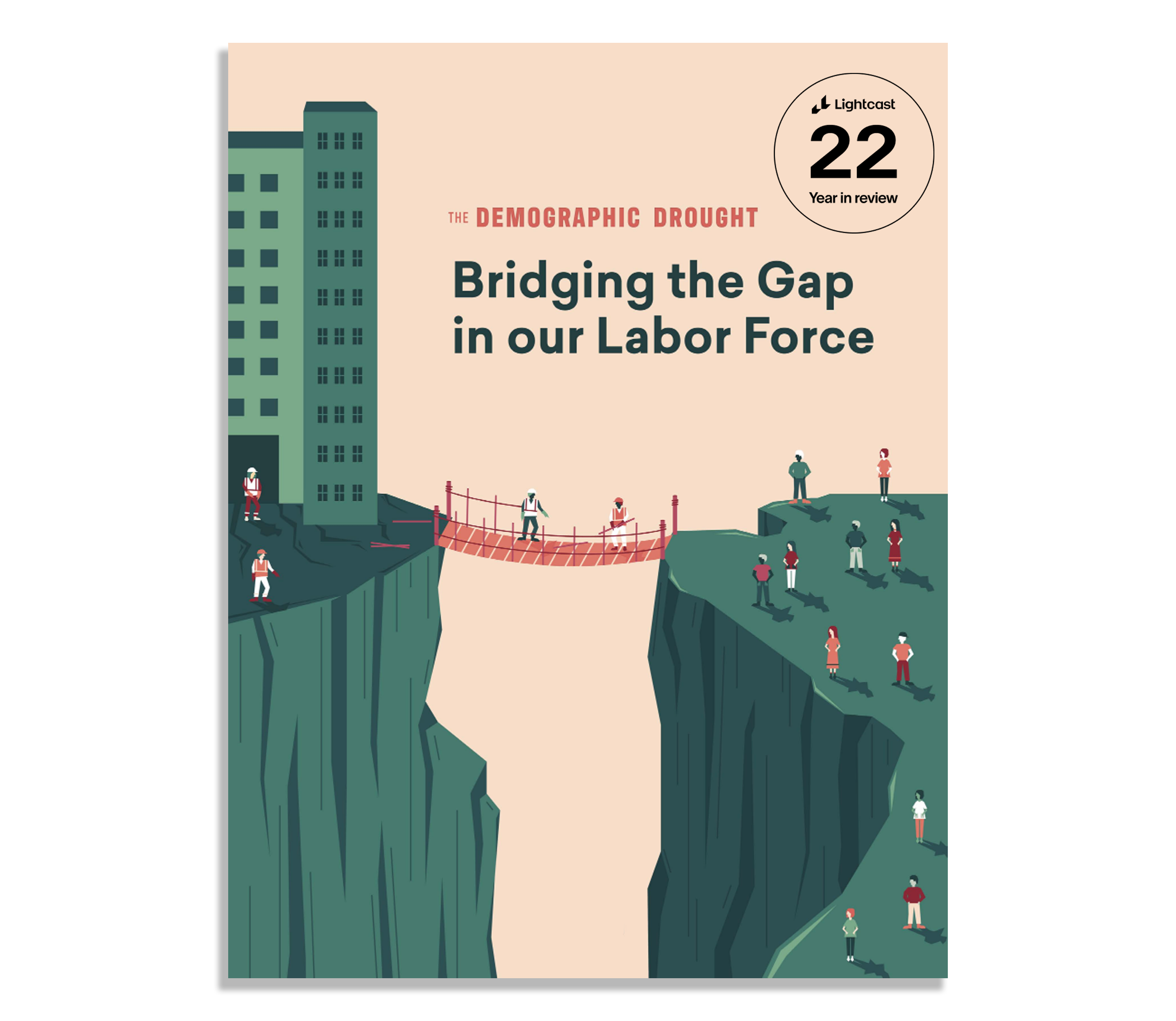There's A Storm Coming.
Read our latest Demographic Drought research.
Whether you’re an employer, a workforce development professional, a student, an educator, or a worker, 2022 has been a tumultuous year for the labor market. As the year closes, Lightcast is looking back at some of the trends that have shaped the job market this year–and that are likely to set the agenda for next year as well.

Demographic changes mean that most countries are going to see their working-age population slow down or even decline. Bringing disengaged workers back into the labor force is going to be critical in filling jobs. And higher education will need to look beyond traditional students to expand enrollment.
 |
The Demographic Drought: Bridging the Gap in Our Labor ForceThe current worker shortage isn’t a passing phase–it’s the new normal. So what can employers, educators, policymakers, and workers themselves do in response? Our research shows a way forward by re-envisioning the future of work. Read the full report here. |
 |
Workers Wanted, Worldwide
|
|

Flexible work has led to a shift away from cities to more rural areas. When populations grow, it changes where talent can be found and opens up new opportunities.
 |
Rural's Rise: Shifting Trends in Rural and Urban Job PostingsPeople are moving from urban centers to rural communities—and our database of 1 billion postings shows that the jobs are following them. This presents new opportunities for regions of every size—read the report to learn more. |
 |
The 2022 Talent Attraction ScorecardAs communities now grapple with a demographic drought, worker shortage, supply chain woes, and a looming recession, creating and maintaining a healthy talent pipeline will be vital. Explore the interactive report to learn which communities are growing most effectively and how to emulate them. |

The skills workers need are changing with blinding speed. Lightcast research shows the critical skills for the average job have changed 37% over the past five years. Employers and employees need to know which skills are changing most in order to stay ahead of the curve without falling behind.
 |
Shifting Skills, Moving Targets, and Remaking The WorkforceThe skills underlying the average job have changed 37% in the last five years. How can employers and workers keep up with that pace of change? Read our collaboration with BCG and The Burning Glass Institute to see precisely how jobs have changed and how employers and workers can adapt. |
 |
Artificial Intelligence in the UKThe number of UK job postings requesting artificial intelligence skills has more than tripled over the past decade, and jobs that require AI skills tend to pay an average of 20% more than the same jobs which don’t mention these skills. Learn more in our interactive report here.
|

In this new job market, it will pay off for employers to invest in training, educators to invest in new programs, and for workers to invest in themselves.
 |
The Changing Face of Apprenticeships: New Opportunities for Employers and STARsApprenticeships are ready to meet this moment. In today's dynamic labor market, apprenticeships are a vital tool for employers to find diverse, skilled talent for their hard-to-fill roles. Explore our collaboration with Opportunity@Work here. |
 |
Moving Up and Moving Forward: Advancing Mobility for Adult LearnersLightcast's analysis of over 125 million social profile records, we find that adults who return to higher education see a: 140% larger increase in average annual salary than those who do not go back to school — and their upward mobility is 22% greater. Read the full report. |
